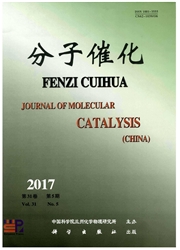

 中文摘要:
中文摘要:
采用频率为150Hz、峰值电压为30kV的高压放电电源为液电等离子反应器电源,设计了放电电极水平间距为2cm的针一筒曝气连续式液电等离子反应器,研究了对硝基苯酚废水在该液电等离子反应器中的降解规律.研究表明,经过120min高压放电降解,对硝基苯酚的降解率可达91.2%,对硝基苯酚废水初始浓度、pH值和电导率影响对硝基苯酚的降解率.降低对硝基苯酚的浓度可提高降解速率,初始pH值小对降解有利;初始电导率的增加不利于降解的进行.采用FT—IR、LC/MS跟踪降解过程中间产物,检测到对硝基苯酚废水降解过程中有醌物种生成,提出了对硝基苯酚的降解主要被自由基攻击,并取代对硝基苯酚的活性位所引起.通过比较,液电等离子体技术是降解对硝基苯酚的有效方法.
 英文摘要:
英文摘要:
Removal rate of 91.2% for Paranitrophenol was obtained after 120 min discharge at 30 kV of peak voltage, 150 Hz of frequency and 2 mm of distance in needle-balloon continuous reactor with gas bubbling. The study shows Original concentration, pH, conductivity affect the degradation. Lower original concentration, Orig- inal pH and lower conductivity can improve degradation rate. FT-IR, high performance liquid chromatography (HPLC) and LC/MS are used to monitor the degradation process and to identify the major oxidation intermediates. Degradation pathways of them are proposed on the basis of detection of intermediates. The activity bit of paranitrophenol was attacked and permuted by hydroxyl radical. And then the quinone are detected. These products are further oxidized, eventually, mineralized into CO2, H2O, finally . So mechanism of degradation is in reason. The degradation is successful.
 同期刊论文项目
同期刊论文项目
 同项目期刊论文
同项目期刊论文
 期刊信息
期刊信息
